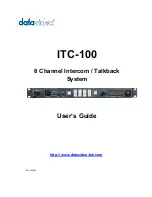
ENGLISH
68
GB
2.2.1 Hydraulic connections
2.2.1 Hydraulic connections
Make the connection at input to the system through the mouth on Face C
Make the connection at input to the system through the mouth on Face C
marked “IN” in Fig.9 (suction connection). Then remove the respective cap
marked “IN” in Fig.9 (suction connection). Then remove the respective cap
with the aid of the accessory tool or with a screwdriver.
with the aid of the accessory tool or with a screwdriver.
Make the connection at output from the system through the mouth on Face C
Make the connection at output from the system through the mouth on Face C
marked “OUT 1” in Fig.9 and/or through the mouth on Face D marked “OUT
marked “OUT 1” in Fig.9 and/or through the mouth on Face D marked “OUT
2” in Fig.9 (delivery connection). In this configuration either of the 2 mouths can
2” in Fig.9 (delivery connection). In this configuration either of the 2 mouths can
be used as an alternative to the other (depending on the convenience of the
be used as an alternative to the other (depending on the convenience of the
installation), or simultaneously (dual delivery system). So remove the cap(s)
installation), or simultaneously (dual delivery system). So remove the cap(s)
from the door(s) you intend to use with the aid of the accessory tool or with a
from the door(s) you intend to use with the aid of the accessory tool or with a
screwdriver.
screwdriver.
All the hydraulic connections of the system to the plant to which it can be con
-
All the hydraulic connections of the system to the plant to which it can be con
-
nected are of the threaded female type 1” GAS, made of brass.
nected are of the threaded female type 1” GAS, made of brass.
See WARNING for Figure 8.
See WARNING for Figure 8.
2.2.2 Orientation of the Interface Panel
2.2.2 Orientation of the Interface Panel
The Interface Panel has been designed so that it can be oriented in the
The Interface Panel has been designed so that it can be oriented in the
direction where it is most convenient for the user to read: its square shape
direction where it is most convenient for the user to read: its square shape
allows it to be rotated from 90° to 90° (Fig.10).
allows it to be rotated from 90° to 90° (Fig.10).
•
•
Disengage the 4 screws at the corners of the panel using the hex
Disengage the 4 screws at the corners of the panel using the hex
wrench provided with the accessory tool.
wrench provided with the accessory tool.
•
•
Do not remove the screws, just disengage them from the thread
Do not remove the screws, just disengage them from the thread
on the product body.
on the product body.
•
•
Be careful not to drop the screws into the system.
Be careful not to drop the screws into the system.
•
•
Move the panel away, taking care not to pull on the signal trans
-
Move the panel away, taking care not to pull on the signal trans
-
mission cable.
mission cable.
•
•
Reposition the panel in its seat at the preferred angle taking care
Reposition the panel in its seat at the preferred angle taking care
not to pinch the cable.
not to pinch the cable.
•
•
Tighten the 4 screws with the wrench.
Tighten the 4 screws with the wrench.
Figure 10
Summary of Contents for e.sybox Series
Page 3: ......













































